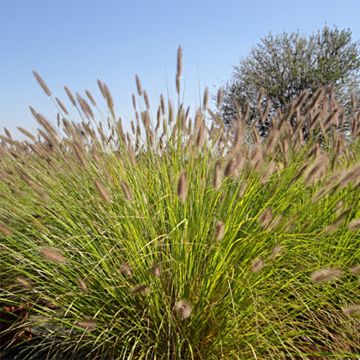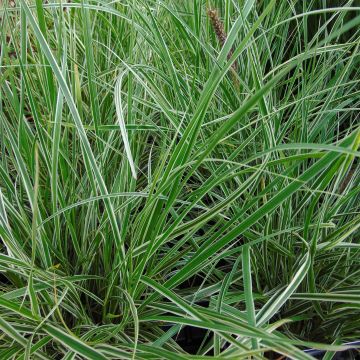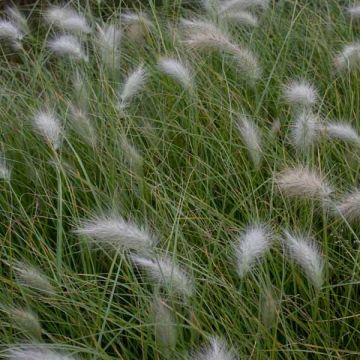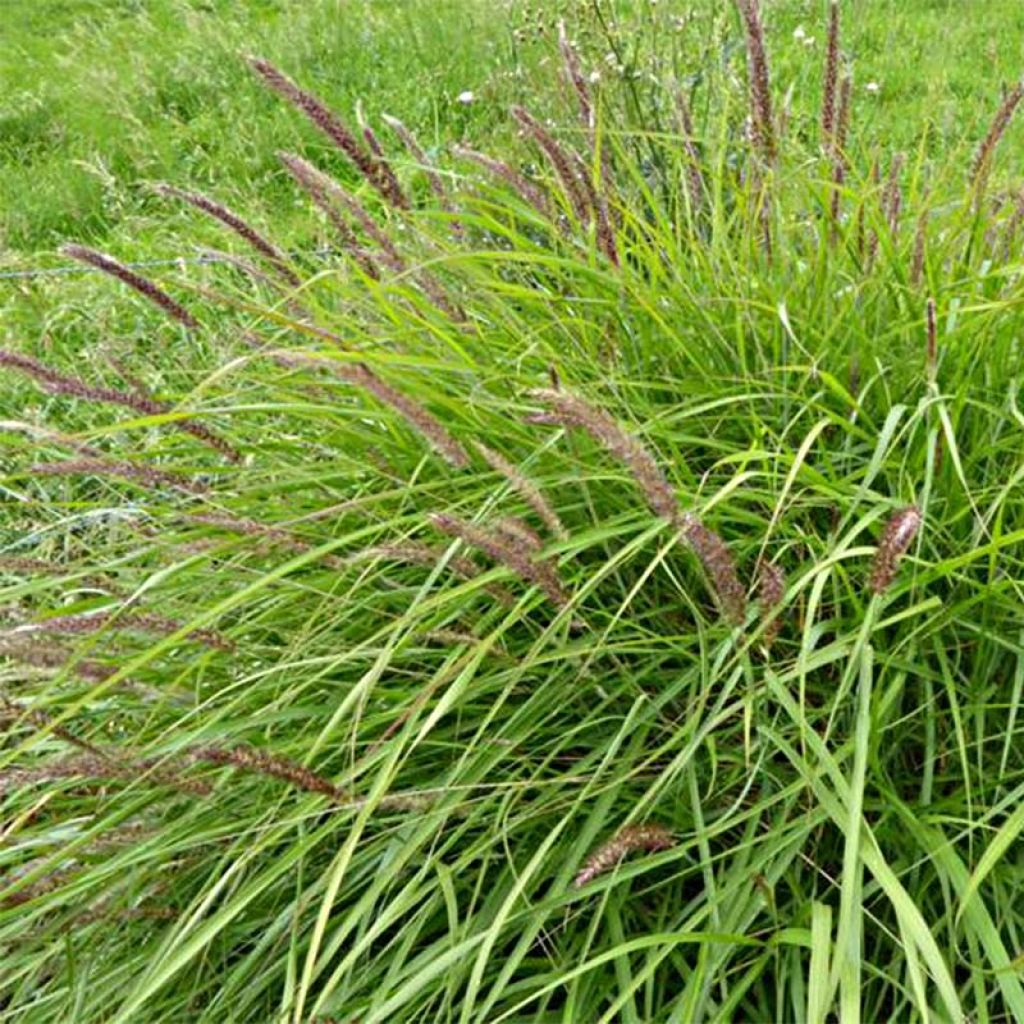

Pennisetum incomptum
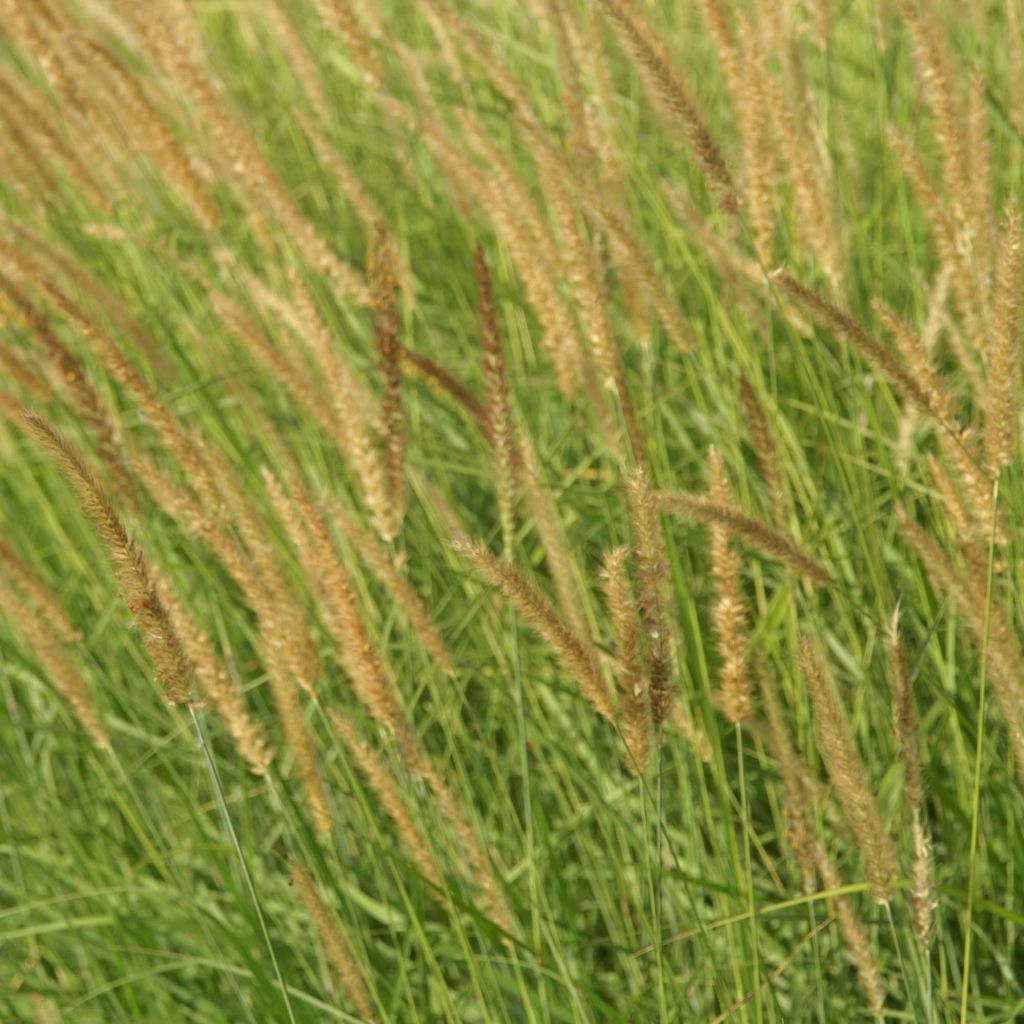

Pennisetum incomptum


Pennisetum incomptum
Pennisetum incomptum
Pennisetum incomptum
Very beautiful young plants, I will order more for my other pots. The shoots are growing very well, I hope they survive the winter.
Christine, 12/07/2022
This item cannot be shipped to the selected country
Delivery charge from €5.90
More information
Schedule delivery date,
and select date in basket
This plant carries a 12 months recovery warranty
More information
We guarantee the quality of our plants for a full growing cycle, and will replace at our expense any plant that fails to recover under normal climatic and planting conditions.
From €5.90 for pickup delivery and €6.90 for home delivery
Express home delivery from €8.90.

Does this plant fit my garden?
Set up your Plantfit profile →
Description
The Pennisetum incomptum is a robust perennial grass that is very hardy and tolerant of soil, spray, and drought. Made for large, slightly wild spaces, it is easy to contain in a large pot. This conquering species forms a large tuft with an upright, somewhat blurry habit of green-grey colour, attractive from the beginning of summer due to its early flowering. Its long, swaying spikes dominate the shifting mass of foliage, like fine plumes evolving from silver-green to beige-brown at the end of the season. This species has a trailing root system that needs to be controlled. Very easy to grow and undemanding, it is an ideal plant for large sunny beds, even in poor or occasionally dry soil in summer.
The Pennisetum incomptum is a grass native to northern China and belongs to the large Poaceae family. This grass with fluffy panicles develops from a powerful rhizomatous base. At maturity and in full bloom, it will form tufts over a metre high, expanding without theoretical limit over the years. Unlike other Pennisetum, this species has a somewhat upright habit. The basal tuft consists of long, very thin leaves of a slightly glaucous grey-green colour. The flowering culms emerge from the vegetation in June-July, carrying upright flower heads composed of very silky spikelets gathered in thin spikes, 20 to 25 cm (8 to 10in) long. Their colour evolves from silver-green to beige-brown in September-October. The foliage turns straw yellow in autumn. The plant remains decorative for a good part of winter and looks stunning covered in frost.
This vigorous grass provides a natural solution for landscaping difficult areas to retain a dry slope, ensure the decor of an urban space or a contemporary-style bed, or keep any unwanted intruders out. It requires space and lots of sun to express all its qualities, and it accepts areas beaten by winds and coastal climates. It could be associated with other large grasses such as Miscanthus or pampas grass and with vigorous shrubs and perennials such as Russian sage, broom, perennial sunflowers, or tall thistles. Grasses bring a suppleness to any landscape without overshadowing the beauty of their companions. Pennisetum allows for movement in beds strategically placed between rocks in a rock garden or on a wall. Don't deprive yourself of your sense of touch either: their panicles are as silky to the touch as they appear.
Report an error about the product description
Pennisetum incomptum in pictures






Flowering
Foliage
Plant habit
Botanical data
Pennisetum
incomptum
Poaceae
North Asia
Other Pennisetum
Planting and care
To plant Pennisetum incomptum, choose a sunny spot and dig a hole that is 20 cm (8in) x 20 cm (8in) x 20 cm (8in) in size. This plant can grow in different types of soil such as light and well-drained or dense and slightly moist, and in acidic, neutral, or even alkaline soils. Once established, it can survive summer drought and dryness in poor, sandy, and highly permeable soils.
If your soil is heavy, mix in coarse sand, gravel, and compost. If it is poor, add leaf compost and well-rotted compost when planting. Remove the young plant from the pot and place it in the hole so that the top of the root ball is covered with 3 cm (1in) of soil. Firmly press the soil and water it thoroughly to remove any air pockets.
If the weather is dry, water the plant regularly for a few weeks to help it establish. Grasses remain decorative throughout the year but form new foliage in spring. Prune your plants in late January or early February and cut them down to 10 cm (4in) to make room for new foliage.
Planting period
Intended location
Care
-
, onOrder confirmed
Reply from on Promesse de fleurs
Summer flowering perennials
Haven't found what you were looking for?
Hardiness is the lowest winter temperature a plant can endure without suffering serious damage or even dying. However, hardiness is affected by location (a sheltered area, such as a patio), protection (winter cover) and soil type (hardiness is improved by well-drained soil).

Photo Sharing Terms & Conditions
In order to encourage gardeners to interact and share their experiences, Promesse de fleurs offers various media enabling content to be uploaded onto its Site - in particular via the ‘Photo sharing’ module.
The User agrees to refrain from:
- Posting any content that is illegal, prejudicial, insulting, racist, inciteful to hatred, revisionist, contrary to public decency, that infringes on privacy or on the privacy rights of third parties, in particular the publicity rights of persons and goods, intellectual property rights, or the right to privacy.
- Submitting content on behalf of a third party;
- Impersonate the identity of a third party and/or publish any personal information about a third party;
In general, the User undertakes to refrain from any unethical behaviour.
All Content (in particular text, comments, files, images, photos, videos, creative works, etc.), which may be subject to property or intellectual property rights, image or other private rights, shall remain the property of the User, subject to the limited rights granted by the terms of the licence granted by Promesse de fleurs as stated below. Users are at liberty to publish or not to publish such Content on the Site, notably via the ‘Photo Sharing’ facility, and accept that this Content shall be made public and freely accessible, notably on the Internet.
Users further acknowledge, undertake to have ,and guarantee that they hold all necessary rights and permissions to publish such material on the Site, in particular with regard to the legislation in force pertaining to any privacy, property, intellectual property, image, or contractual rights, or rights of any other nature. By publishing such Content on the Site, Users acknowledge accepting full liability as publishers of the Content within the meaning of the law, and grant Promesse de fleurs, free of charge, an inclusive, worldwide licence for the said Content for the entire duration of its publication, including all reproduction, representation, up/downloading, displaying, performing, transmission, and storage rights.
Users also grant permission for their name to be linked to the Content and accept that this link may not always be made available.
By engaging in posting material, Users consent to their Content becoming automatically accessible on the Internet, in particular on other sites and/or blogs and/or web pages of the Promesse de fleurs site, including in particular social pages and the Promesse de fleurs catalogue.
Users may secure the removal of entrusted content free of charge by issuing a simple request via our contact form.
The flowering period indicated on our website applies to countries and regions located in USDA zone 8 (France, the United Kingdom, Ireland, the Netherlands, etc.)
It will vary according to where you live:
- In zones 9 to 10 (Italy, Spain, Greece, etc.), flowering will occur about 2 to 4 weeks earlier.
- In zones 6 to 7 (Germany, Poland, Slovenia, and lower mountainous regions), flowering will be delayed by 2 to 3 weeks.
- In zone 5 (Central Europe, Scandinavia), blooming will be delayed by 3 to 5 weeks.
In temperate climates, pruning of spring-flowering shrubs (forsythia, spireas, etc.) should be done just after flowering.
Pruning of summer-flowering shrubs (Indian Lilac, Perovskia, etc.) can be done in winter or spring.
In cold regions as well as with frost-sensitive plants, avoid pruning too early when severe frosts may still occur.
The planting period indicated on our website applies to countries and regions located in USDA zone 8 (France, United Kingdom, Ireland, Netherlands).
It will vary according to where you live:
- In Mediterranean zones (Marseille, Madrid, Milan, etc.), autumn and winter are the best planting periods.
- In continental zones (Strasbourg, Munich, Vienna, etc.), delay planting by 2 to 3 weeks in spring and bring it forward by 2 to 4 weeks in autumn.
- In mountainous regions (the Alps, Pyrenees, Carpathians, etc.), it is best to plant in late spring (May-June) or late summer (August-September).
The harvesting period indicated on our website applies to countries and regions in USDA zone 8 (France, England, Ireland, the Netherlands).
In colder areas (Scandinavia, Poland, Austria...) fruit and vegetable harvests are likely to be delayed by 3-4 weeks.
In warmer areas (Italy, Spain, Greece, etc.), harvesting will probably take place earlier, depending on weather conditions.
The sowing periods indicated on our website apply to countries and regions within USDA Zone 8 (France, UK, Ireland, Netherlands).
In colder areas (Scandinavia, Poland, Austria...), delay any outdoor sowing by 3-4 weeks, or sow under glass.
In warmer climes (Italy, Spain, Greece, etc.), bring outdoor sowing forward by a few weeks.


































